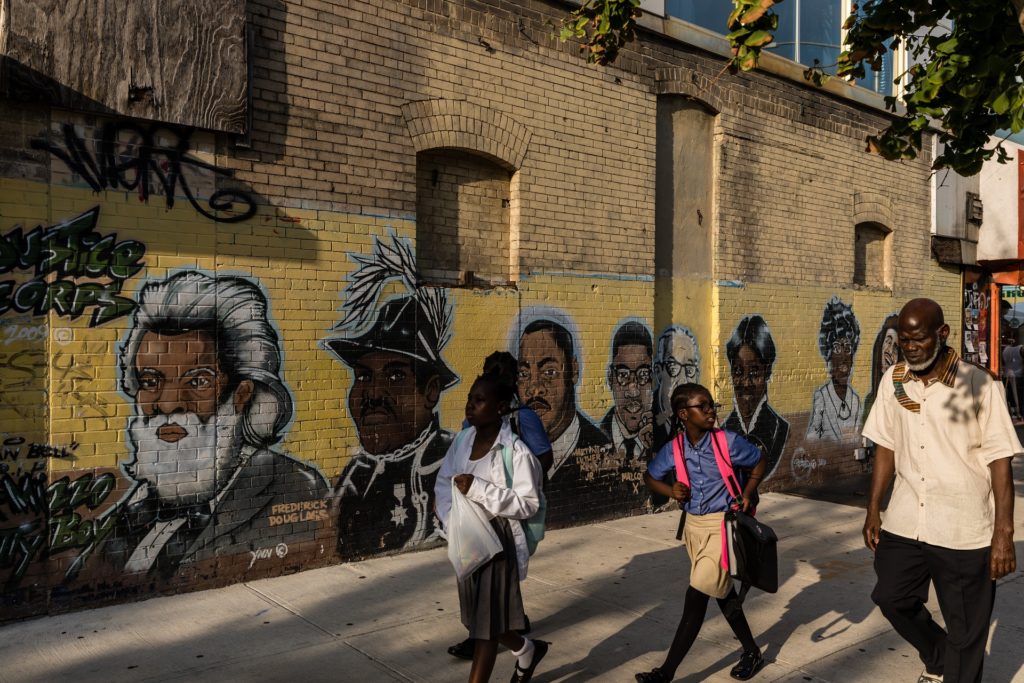10 miles and 7 hours: A march against gentrification moves across Brooklyn
"Before it’s gone take it back! Brooklyn’s not for sale."

Protesters begin their march in Downtown Brooklyn, an area that has seen rapid development of luxury high-rises and office buildings since a 2004 rezoning. Eagle photo by Paul Frangipane
More than 100 protesters took to the streets on Saturday to march nearly 10 miles around Brooklyn, starting in Downtown and ending in East New York, in a seven-hour demonstration against gentrification, racism and police violence. Along the way, they stopped at businesses, intersections and buildings that they felt embodied those things they were fighting against.
Their voices rang out above the roar of the traffic on busy streets.
“Before it’s gone take it back! Brooklyn’s not for sale,” demonstrators chanted. They marched on the sidewalk, holding signs that said “Gentrification Is Violence Against People of Color” and “City Planning Stop Your Racist Planning.”
